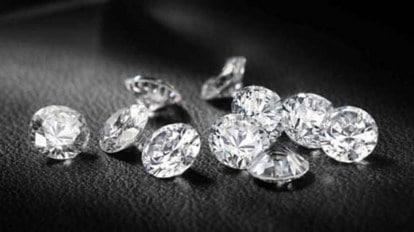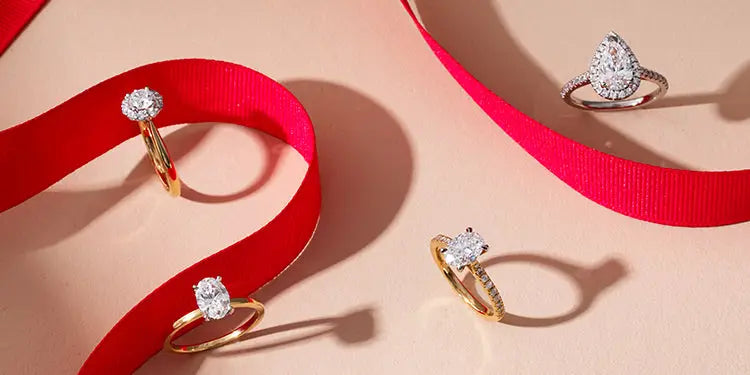Diamonds have always been symbols of luxury, beauty, and strength, and when set in jewelry, they elevate the piece to an entirely new level of sophistication. Among the most cherished and versatile diamond jewelry items is the diamond pendant. Whether worn as a daily accessory or for special occasions, a diamond pendant is a timeless piece that adds grace and charm to any outfit. In this article, we explore the beauty, history, and significance of diamond pendants, along with some tips on choosing the perfect one.
The History and Significance of Diamond Pendants
The colgante diamante dates back centuries, but it wasn’t until the 18th and 19th centuries that diamonds began to be incorporated into everyday jewelry pieces, including pendants. In those eras, diamonds were often reserved for royalty and aristocrats as symbols of status and wealth. Their dazzling brilliance made them ideal for use in pendants, which could be worn around the neck to display the wearer’s elevated status.
As time went on, diamonds became more accessible, and the diamond pendant became a popular piece of jewelry for people of all classes. Today, diamond pendants are not just associated with wealth; they symbolize lasting love, celebration, and important milestones such as anniversaries, birthdays, or engagements. In modern jewelry collections, the diamond pendant is seen as both a sentimental and fashionable item.
The Anatomy of a Diamond Pendant
A diamond pendant typically consists of three main components: the diamond, the setting, and the chain.
- The Diamond: The diamond itself is the centerpiece of the pendant. When selecting a diamond for a pendant, factors such as the diamond’s size (carat), clarity, color, and cut (collectively known as the “Four Cs”) determine its quality and value. The brilliance and fire of a well-cut diamond are essential, as they allow the stone to catch and reflect light, creating the spectacular sparkle that diamonds are known for.
- The Setting: The setting is the metal framework that holds the diamond in place. Common settings for diamond pendants include prong settings, bezel settings, and pave settings. Each setting has its own aesthetic and practical advantages:
- Prong Setting: Allows for maximum light exposure to the diamond, enhancing its sparkle.
- Bezel Setting: Offers a secure and modern look, where the diamond is encircled by a metal rim.
- Pave Setting: Features small diamonds set closely together to create a continuous sparkle, often used to accentuate the central stone.
- The Chain: The chain is the piece of metal that holds the pendant around the neck. Chains come in various lengths and styles, such as cable chains, snake chains, and rope chains. The choice of chain depends on the wearer’s personal style and the size of the pendant.
Types of Diamond Pendants
Diamond pendants come in a wide variety of styles to suit different tastes and occasions. Some of the most popular types include:
- Solitaire Diamond Pendant: This is the classic design, featuring a single diamond as the focal point. The simplicity of the solitaire design allows the beauty of the diamond to take center stage. It’s a versatile and elegant choice for both everyday wear and special events.
- Halo Diamond Pendant: A halo pendant surrounds a central diamond with a ring of smaller diamonds. This design enhances the sparkle of the central stone and creates a more dramatic effect. Halo pendants are often seen in engagement jewelry but are also popular for anniversary gifts and birthdays.
- Heart-Shaped Diamond Pendant: The heart-shaped pendant is a symbol of love and affection. Often given as a romantic gift for significant occasions like Valentine’s Day or anniversaries, this design combines the sentiment of the heart with the elegance of diamonds.
- Diamond Cross Pendant: The diamond cross pendant is a meaningful and symbolic piece, often worn to represent faith. The addition of diamonds to the cross enhances the beauty of this religious symbol, lab created diamonds, making it suitable for both spiritual and stylish purposes.
- Personalized Diamond Pendant: Some diamond pendants feature custom engravings, initials, or birthstones. Personalized pendants add a unique touch and can be a perfect gift for loved ones, offering sentimental value alongside the beauty of diamonds.
Encuentra joyas con diamantes éticamente seleccionados en novitadiamonds.es. Diseño y brillo que perduran.
How to Choose the Perfect Diamond Pendant
When selecting a diamond pendant, it’s important to consider several factors to ensure you choose the right one for yourself or as a gift:
- Budget: Determine how much you’re willing to spend before browsing. The price of a diamond pendant can vary greatly depending on the quality of the diamond and the materials used in the setting.
- Style: Consider the style preferences of the person wearing the pendant. A minimalist design might be ideal for someone who loves simplicity, while a more ornate piece might be a perfect choice for someone who enjoys statement jewelry.
- Occasion: Think about the occasion for which the pendant is intended. A classic solitaire pendant might be perfect for a birthday, while a halo or heart-shaped pendant might be more fitting for a romantic gift.
- Metal Type: Diamond pendants come in a variety of metals, including white gold, yellow gold, rose gold, platinum, and sterling silver. Choose a metal that complements the wearer’s personal style and skin tone.
- Chain Length: The length of the chain can significantly impact how the pendant is worn. Shorter chains (16-18 inches) typically sit close to the neck, while longer chains (20-24 inches) provide a more relaxed and elongated look. Consider what chain length would best suit the wearer’s style.
Caring for Your Diamond Pendant
Diamonds are durable, but they still require proper care to maintain their brilliance. Here are a few tips to keep your diamond pendant looking its best:
- Clean regularly: Use a soft cloth and mild soap solution to clean the pendant. Avoid harsh chemicals or abrasive materials that could scratch the diamond or the metal.
- Store safely: Keep your diamond pendant in a jewelry box or pouch to prevent it from scratching against other jewelry.
- Check the setting: Have the pendant inspected periodically by a professional jeweler to ensure that the diamond is secure in its setting.
Conclusion
A diamond pendant is a piece of jewelry that can elevate any outfit and carry deep personal significance. Whether given as a gift for a special occasion or worn as an everyday accessory, a diamond pendant is a timeless addition to any jewelry collection. By choosing a style that matches personal tastes and understanding the quality of the diamond, anyone can own or gift a beautiful, meaningful piece that will be cherished for years to come.



:max_bytes(150000):strip_icc()/alekon-pictures-yj4kwA4h_Ms-unsplash-230509491f114970902d0e9aefb37850.jpg)
